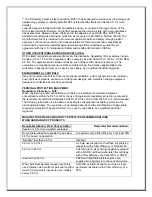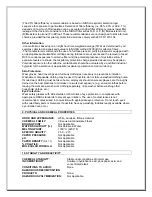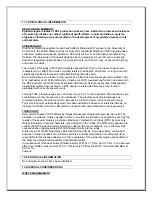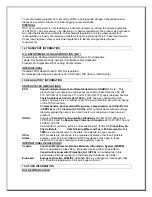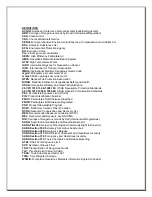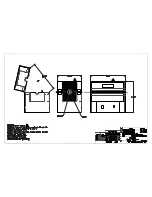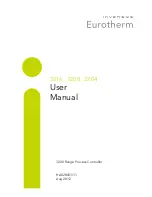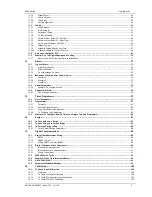
** The Refractory Ceramic Fibers Coalition (RCFC) has sponsored comprehensive toxicology and
epidemiology studies to identify potential RCF-related health effects [see Section 11 for more
details],
consulted experts familiar with fiber and particle science, conducted a thorough review of the
RCF-related scientific literature, and further evaluated the data in a state-of-the-art quantitative
risk assessment. Based on these efforts and in the absence of an OSHA PEL, RCFC has
adopted a recommended exposure guideline, as measured under NIOSH Method 7400 B. The
manufacturers’ REG is intended to promote occupational health and safety through prudent
exposure control and reduction and it reflects relative technical and economic feasibility as
determined by extensive industrial hygiene monitoring efforts undertaken pursuant to an
agreement with the U.S. Occupational Safety and Health Administration (OSHA).
OTHER OCCUPATIONAL EXPOSURE LEVELS (OEL)
RCF-related occupational exposure limits vary internationally. Regulatory OEL examples include:
Canada –0.2 to 1.0 f/cc; Non-regulatory OEL examples include: ACGIH TLV 0.2 f/cc; RCFC REG
0.5 f/cc. The objectives and criteria underlying each of these OEL decisions also vary. The
evaluation of occupational exposure limits and determining their relative applicability to the
workplace is best performed, on a case-by case basis, by a qualified Industrial Hygienist.
ENVIRONMENTAL CONTROLS
Use environmental controls such as local exhaust ventilation, point of generation dust collection,
down draft work stations, emission controlling tool designs, and materials handling equipment
designed to minimize airborne fiber emissions.
PERSONAL PROTECTION EQUIPMENT
Respiratory Protection – RCF:
When engineering and/or administrative controls are insufficient to maintain workplace
concentrations within the 0.5 f/cc REG, the use of appropriate respiratory protection, pursuant to
the requirements of OSHA Standards 29 CFR 1910.134 and 29 CFR 1926.103, is recommended.
The following information is provided as an example of appropriate respiratory protection for
aluminosilicate fibers. The evaluation of workplace hazards and the identification of appropriate
respiratory protection is best performed, on a case by case basis, by a qualified Industrial
Hygienist.
MANUFACTURER’S RESPIRATORY PROTECTION RECOMMENDATIONS
WHEN HANDLING RCF PRODUCTS
Respirable Airborne Fiber Concentration
Respirator Recommendation
†
(levels are 8-hr. time-weighted averages)
Not yet determined but expected to be below
A respirator with a filter efficiency of at least 95%
5.0 f/cc based on operation
"Reliably" less than 0.5 f/cc
Optional
0.5 f/cc to 5.0 f/cc
A single use respirator or half-face, air purifying
respirator with a filter efficiency of at least 95%
5.0 f/cc to 25 f/cc
Full-face piece, air purifying respirator equipped
with a NIOSH certified particulate filter cartridge
with a filter efficiency of at least 95% or PAPR
Greater than 25 f/cc
PAPR with tight-fitting full face piece or a
supplied air respirator in continuous flow mode
When individual workers request respiratory
A NIOSH certified respirator, such as a single
use Protection as a matter of personal comfort particulate respirator with a filter efficiency of a
least or choice where exposures are “reliably”
95%
below .0.5 f/cc
Summary of Contents for XST-2-0-12-1V1-E28
Page 16: ...12 FURNACE TROUBLE SHOOTING ...
Page 27: ...ɸ ...
Page 28: ...ɸ ...
Page 29: ......
Page 30: ......
Page 31: ...3216 3208 3204 User Manual 3200 Range Process Controller HA028651 11 Aug 2012 ...
Page 170: ...User Manual 3200 Series 138 Part No HA028651 Issue 11 0 July 12 21 Certificate of Conformity ...
Page 171: ......
Page 173: ...Model 2416 Process Controller User Manual Part No HA025041_12 Date August 2014 ...
Page 174: ...This page is intentionally blank ...
Page 259: ...This page is intentionally blank ...















